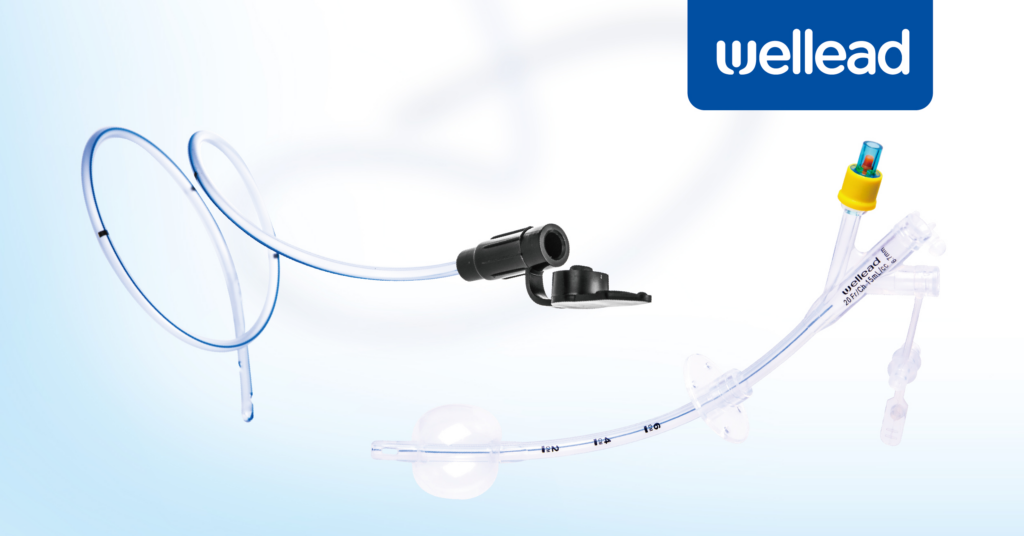What is a feeding tube? Such tubes are flexible conduits that help access the gastrointestinal tract for nutrients, fluids, and medications when oral intake is inadequate or impossible. They can be inserted via the nasal passage (nasogastric or nasojejunal) or a small incision in the abdomen (gastrotomy or jejunostomy).
In healthcare, the feeding tube plays an important role in maintaining patients’ vital signs, facilitating recovery, and supporting overall health.
This article aims to explore the topic of “How does a Feeding Tube Work?”. Application scenarios, working principles, tube types, placement methods, and potential complications will be covered to help readers gain a more comprehensive understanding of this critical medical intervention.

When is a Feeding Tube Needed?
Purpose of the Feeding Tube
Feeding tubes are placed when oral intake is too hazardous or impossible. So, how does a feeding tube work? It delivers formulas into the GI tract while bypassing compromised swallowing mechanisms. It supports hydration, nutrient density, and medication delivery. Clinicians watch residual volumes, electrolyte shifts, and metabolic demands. They also assess tube patency, material uprightness, and positioning using pH testing or radiographic confirmation methods.
Medical Conditions and Scenarios Needing a Feeding Tube
- Neurological disorders (including stroke and paralysis).
- Traumatic brain injury.
- Head and neck cancers.
- Gastrointestinal cancers.
- Injuries that affect your digestive system.
- High-grade esophageal strictures or obstructions.
- Multifarious congenital GI anomalies.
- End-stage neuromuscular disorders.
- Chronic aspiration pneumonia risk.
- Facial or oral cavity reconstructive surgeries.
- Post-radiation mucosal damage.
- Unconsciousness or coma.
- Diminished swallowing reflex in dementia.
- Severe eating disorders.
How does a Feeding Tube Work?
Basic Mechanism of Action
Medical-grade silicone or PVC feeding tubes are thin and flexible. The gastrointestinal tract receives liquid formulae at a regulated pace by pump-driven infusion or gravity. They aim to circumvent damaged chewing and swallowing routes. Consequently, foods, water, and medicines enter via the stomach or small intestine. The device’s tip deposits feed that can be absorbed without disturbing the respiratory tract (proven by imaging or pH tests). Peristaltic motion in the GI tract helps advance the formula through digestion.
To address “how does a feeding tube work” at a cellular level, consider that each milliliter of formula has a high concentration of proteins, carbohydrates, and micronutrients for enteral absorption. It maintains metabolic functions and supports organ systems. Care teams might choose formulas with hydrolyzed proteins or altered fat profiles to manage short bowel syndrome or pancreatitis conditions. Titrating flow rates, volumes, and nutrient composition typify “how does a feeding tube work” in a customized manner for patient needs.
Types of Feeding Tubes and Their Method of Use
Nasogastric tubes (NG) are inserted through the nose and terminated in the stomach. Meanwhile, nasojejunal (NJ) or nasoduodenal (ND) tubes extend into deeper portions of the small intestine for patients with gastric emptying issues. They suit shorter-term support. They can be placed at the bedside using radiographic confirmation or endoscopic guidance.
Longer-term access includes surgically or endoscopically placed gastrostomy (G-tube) or jejunostomy (J-tube) devices. Each has unique connectors, ports, and securing mechanisms for different high-density formulas and administration schedules.
Some patients benefit from gastrojejunostomy (GJ) tubes. They traverse the stomach and terminate in the jejunum. It permits simultaneous drainage of gastric secretions through the stomach port and delivers feeds into the small intestine. Infusions use pumps with peristaltic rollers for a steady drip. Bolus feeds use gravity or a syringe if the stomach can handle larger volumes.
Different kinds of feeding tubes demand protocols for troubleshooting occlusions. It might include gentle declogging with enzyme solutions or water and vigilant site inspection to avert infections and granulation tissue formation at the stoma.
Feeding Tube Placement
Feeding tube placement implicates endoscopic or fluoroscopic guidance to position a nasogastric, orogastric, gastrostomy, or jejunostomy tube with no trauma. The procedure uses imaging to cross past anatomical landmarks and avoid accidental bronchial insertion or visceral perforation. Short-acting sedatives keep the patient comfortable for tube advancement through the esophagus or abdominal.
Many clinicians employ pH testing or capnography at the bedside to validate intragastric or small-bowel location and decrease aspiration jeopardy. It matters because infection, hemorrhage, dislodgment, or misplacement can prompt peritonitis.
In answering the question, “How does a feeding tube work,” it bypasses the oropharyngeal route to deliver nutrition or medication into the digestive tract. Newer tubes have radiopaque lines and securement devices to permit post-insertion imaging and lower migration.
Well Lead Medical’s Feeding Tubes
Well Lead Medical manufactures the Gastrostomy Feeding Tube using 100% medical-grade silicone for biocompatibility and endurance. Our tubes include a gastric balloon for secure implantation and a rounded tip with an open distal end for nutrition delivery. The adjustable skin disk and graded shaft measure stoma depth for sizes 12Fr to 24Fr with balloon capacities of 5 to 15 mL. It improves patient comfort and enteral nutrition feeding.
Our medical-grade PVC Feeding Tube is available in a range of sizes from 4Fr to 20Fr, with an X-ray opaque line throughout the entire length. The proximal end is equipped with a cap, and the scaling on the tube is available for better control.

